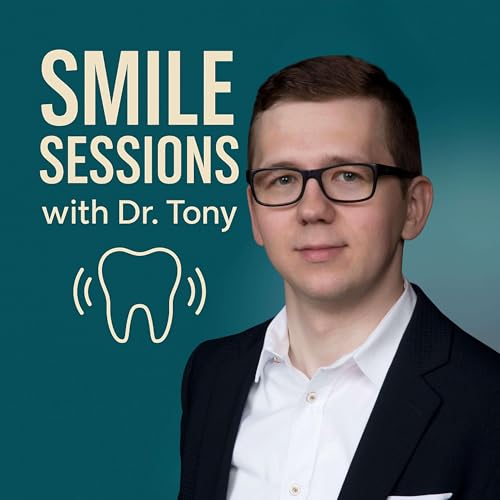Dental trauma can strike without warning — a fall, a sports injury, a workplace accident, or even a routine mishap. When it does, every second matters. In this episode of Smile Sessions with Dr. Tony, we take a deep dive into the evidence-based management of traumatic dental injuries, focusing on luxations, avulsions, fractures, splinting protocols, and the crucial role of documentation in private practice.
Dr. Tony, a comprehensive dentist with more than a decade of hands-on experience in orthodontics, restorative care, implants, and cosmetic dentistry, breaks down the protocols that turn chaotic emergencies into structured, successful outcomes.
What You’ll Learn in This Episode:
- Andreasen Classification System: The gold standard diagnostic framework for traumatic dental injuries.
- Luxation Injuries: Concussion, subluxation, extrusive luxation, lateral luxation, and intrusive luxation — how to diagnose, manage, and monitor each type.
- Avulsions: The critical importance of time and storage medium, replantation protocols, splinting techniques, and long-term follow-up.
- Complicated Crown Fractures: Pulp exposures, capping vs. pulpotomy, and restorative considerations.
- Splinting Techniques: Why flexible, fiber-reinforced composites are preferred and how splint duration varies by case type.
- Patient Instructions: Clear, evidence-based guidance you can give immediately in the chair to improve outcomes.
- Complications to Monitor: From pulp necrosis to resorption and ankylosis — what to expect and how to intervene early.
- Office Staff & Documentation: How to triage effectively, collect the right data, and ensure worker’s compensation or insurance claims are properly supported.
- Workers’ Compensation in Dentistry: Why proper documentation protects both patients and practices in occupational injury cases.
Why This Episode Matters:
Dental trauma isn’t just an “accident” — it’s a clinical challenge that demands precision, rapid decision-making, and a structured protocol. Whether you’re a general dentist, an endodontist, or part of a private practice team, knowing how to respond in the first minutes and hours after trauma can save teeth, preserve long-term oral health, and protect your practice legally and financially.
For Patients Seeking Help:
If you’re experiencing a dental emergency, don’t wait. Immediate care often determines whether a tooth can be saved. For more information about emergency dentistry services and common treatments, visit:
👉 Archer Dental Emergency Dentistry
Who Should Listen:
- General dentists handling trauma in private practice
- Endodontists and specialists interested in multidisciplinary management
- Dental office staff responsible for triage and documentation
- Patients wanting to better understand what happens during dental trauma treatment
- Anyone interested in how modern dentistry manages high-stakes, time-sensitive injuries
Closing Thoughts:
Dr. Tony emphasizes that trauma cases are high-pressure but manageable when approached systematically. From initial classification to splinting, follow-up, and long-term endodontic care, the protocols discussed here are not just theory — they are lifelines for patients and essential tools for clinicians.
Stay tuned for the next episode of Smile Sessions with Dr. Tony, where we’ll dive into worker’s compensation in dentistry and how it impacts patient care, staff workflow, and practice management.
 14 分
14 分 2025/09/1513 分
2025/09/1513 分 2025/09/0518 分
2025/09/0518 分

